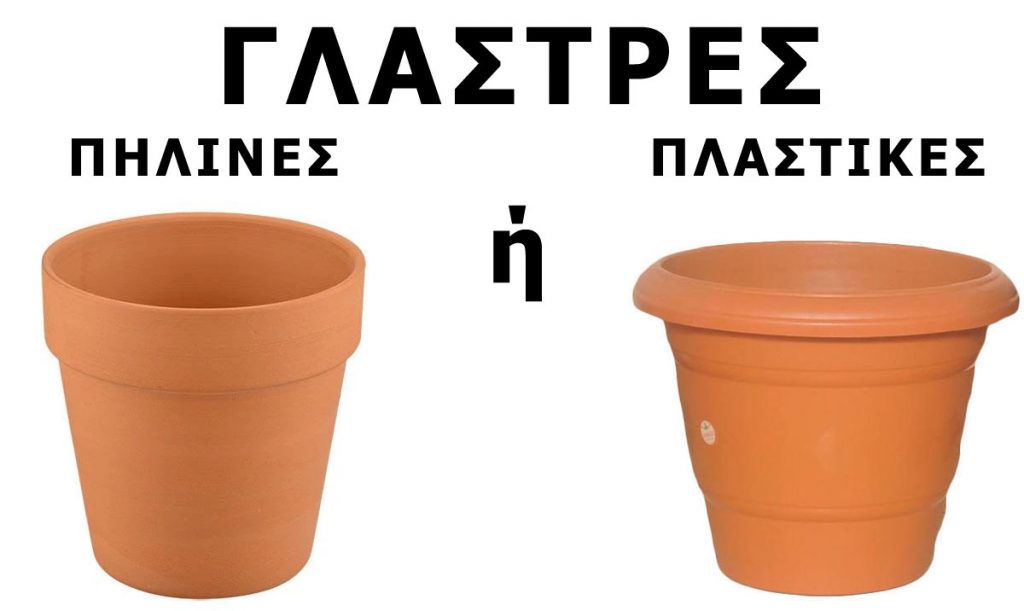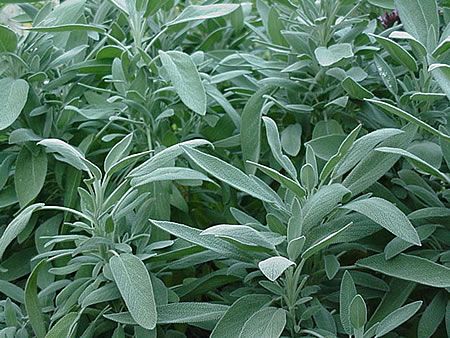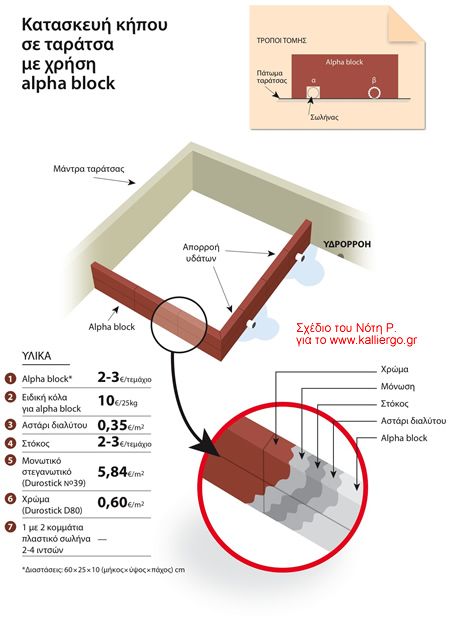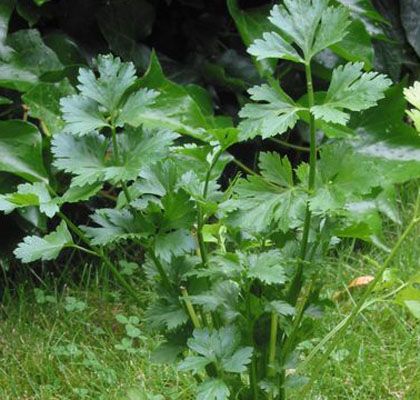A friend asked me a few days ago. “What do you suggest I buy? Plastic or clay pot?“
After some thought, I answered him with several questions. That it depends on what plants he wants to plant in the pots, whether they are vegetable or ornamental plants, where he will put the pots, how much money he can afford and how often he can water the plants.
When you are thinking of planting your vegetable or ornamental plants in pots, you will need to choose whether to use plastic pots or clay pots.
Which pot is best for plant growth?
What are the advantages of each pot?
Which pot size to choose for your plant?
Clay pots
The features that clay pots have are:
- They are porous and allow air oxygen to circulate to the plant roots.
- This helps in better root aeration and better plant growth.
- The fact that they are porous means that they not only allow oxygen to enter, but also promote moisture loss.
- So plants planted in clay pots need more frequent watering.
- Clay pots are generally more expensive than plastic pots.
- But you will also find simple “planter” clay pots that are inexpensive.
- But they come in a wider variety of designs and sizes.
- They are heavy and so are harder to knock over by the wind.
- They are heavy and more difficult to transport.
- They are made of eco-friendly material and do not pollute the environment.
- They fit better in a more traditional and simple environment.
- They last for many, many years. You can pass them on to your descendants.
- Just be careful with them, because they do not forgive abuse and they break.
- There are many Greek pottery workshops that make clay pots.
Plastic pots
The features that plastic pots have are:
- The plastic from which they are made is not permeable to oxygen and moisture.
- Moisture is retained longer in plastic pots and plants need more infrequent watering than those planted in ceramic and clay pots.
- You can find very cheap plastic pots and other very expensive ones. It depends on the durability of the material, the design and the design.
- Depending on the price, comes the quality, UV resistance.
- The cheap plastic pots, have little resistance to sunlight. Their material wears out and they break.
- Suitable for the intermediate stages of plant growth, before transplanting.
- Cheap models are lightweight and easily toppled by the wind.
- Their lifetime depends on the quality and thickness of the plastic.
- They come in many designs and imaginative layouts.
- Plastic planters are suitable for use on balconies in the city. They are easier to hang on balconies because they are lightweight.
- Plastic, is a non-ecological material as it does not break down easily and pollutes the environment.
- However, you can send old plastic pots for recycling.
- If you plan to use plastic pots for a long time, avoid buying those with thin walls.
How to choose the right size pot for your plant
Whether you choose a clay or plastic pot for your plant, make sure the pot size is the right size by following these two simple rules:
Rule A: The diameter of the pot should be at least one-third (1/3) of the plant’s height from the soil to the top. If your plant grows taller, prune it or transplant it into a larger pot.
Rule B: Fast-growing plants develop a deeper root system and need taller pots. Slow-growing plants do well in shallow pots.
I hope I’ve helped you choose between clay or plastic pots. See what the advantages and disadvantages of each solution are.
Tags: CITY • CLAY POT • PLASTIC POT • POT • POTS • URBAN CULTIVATION





